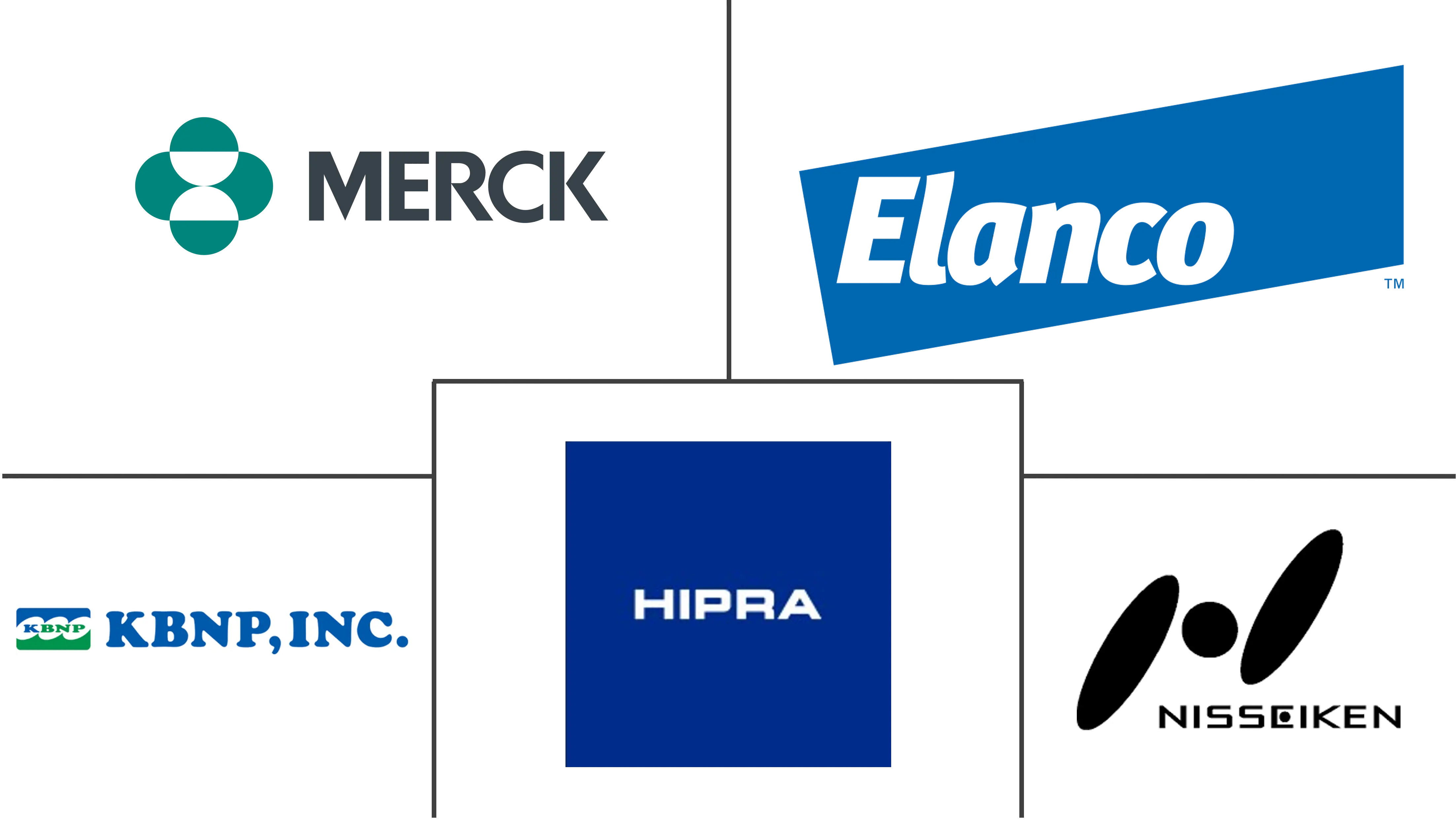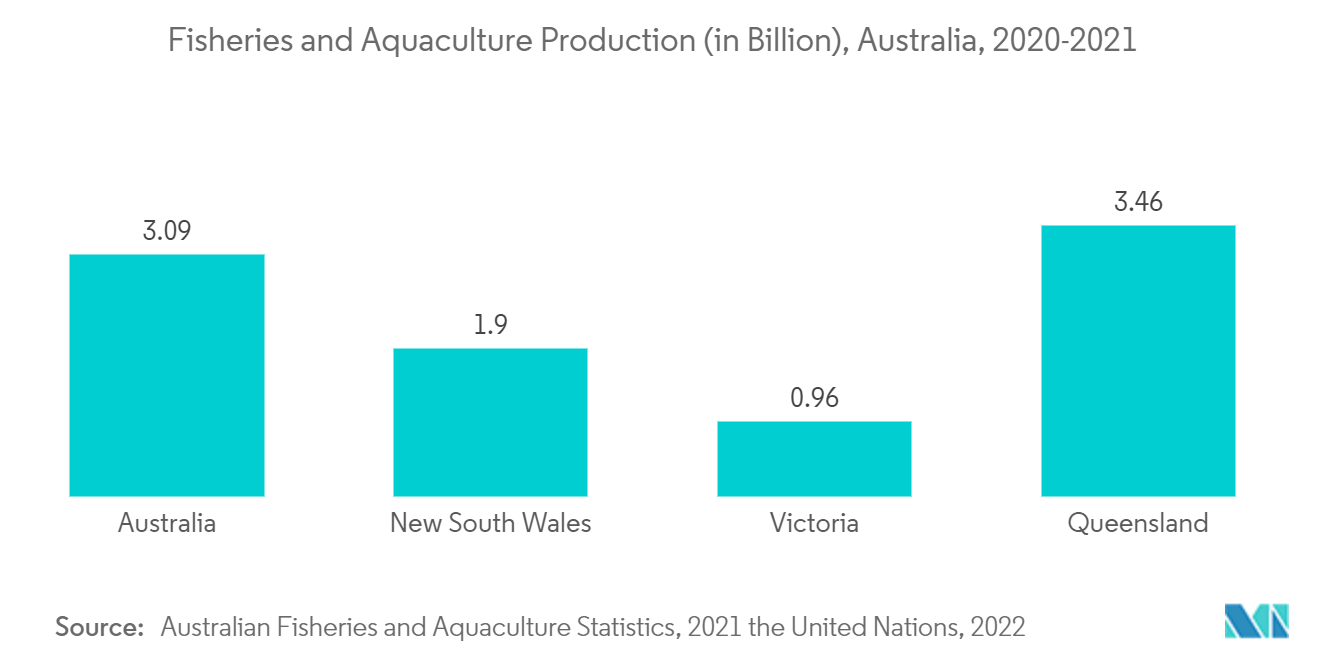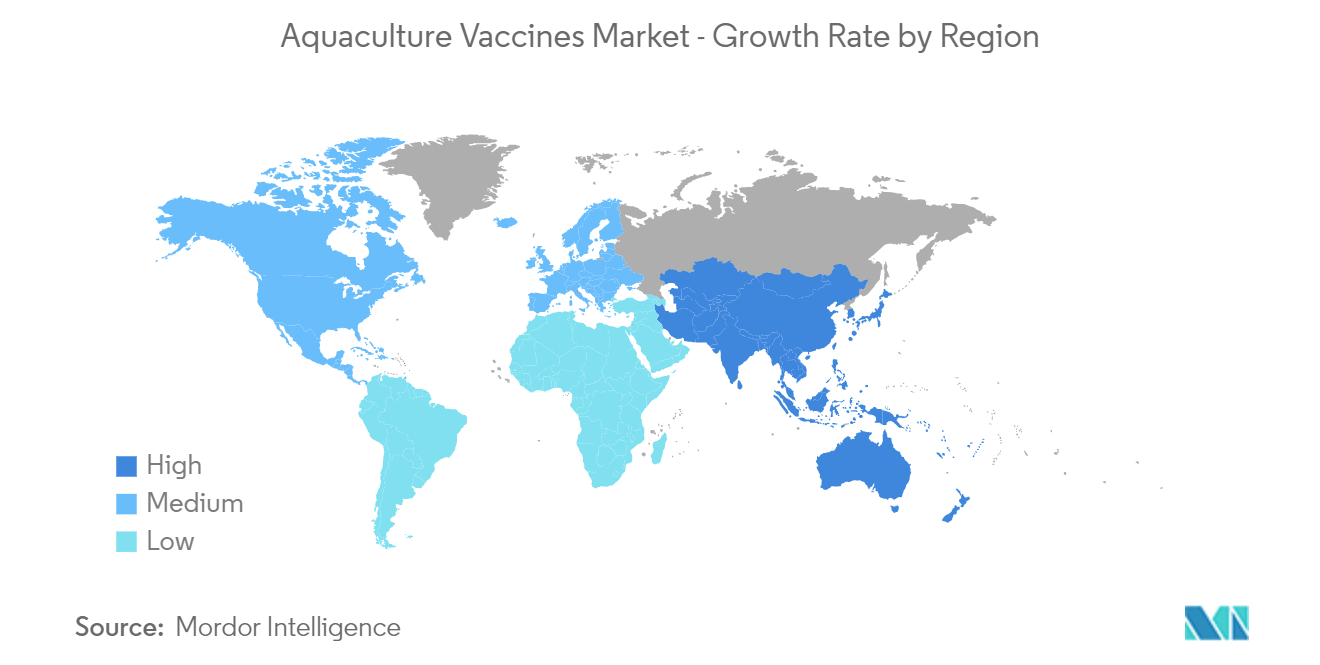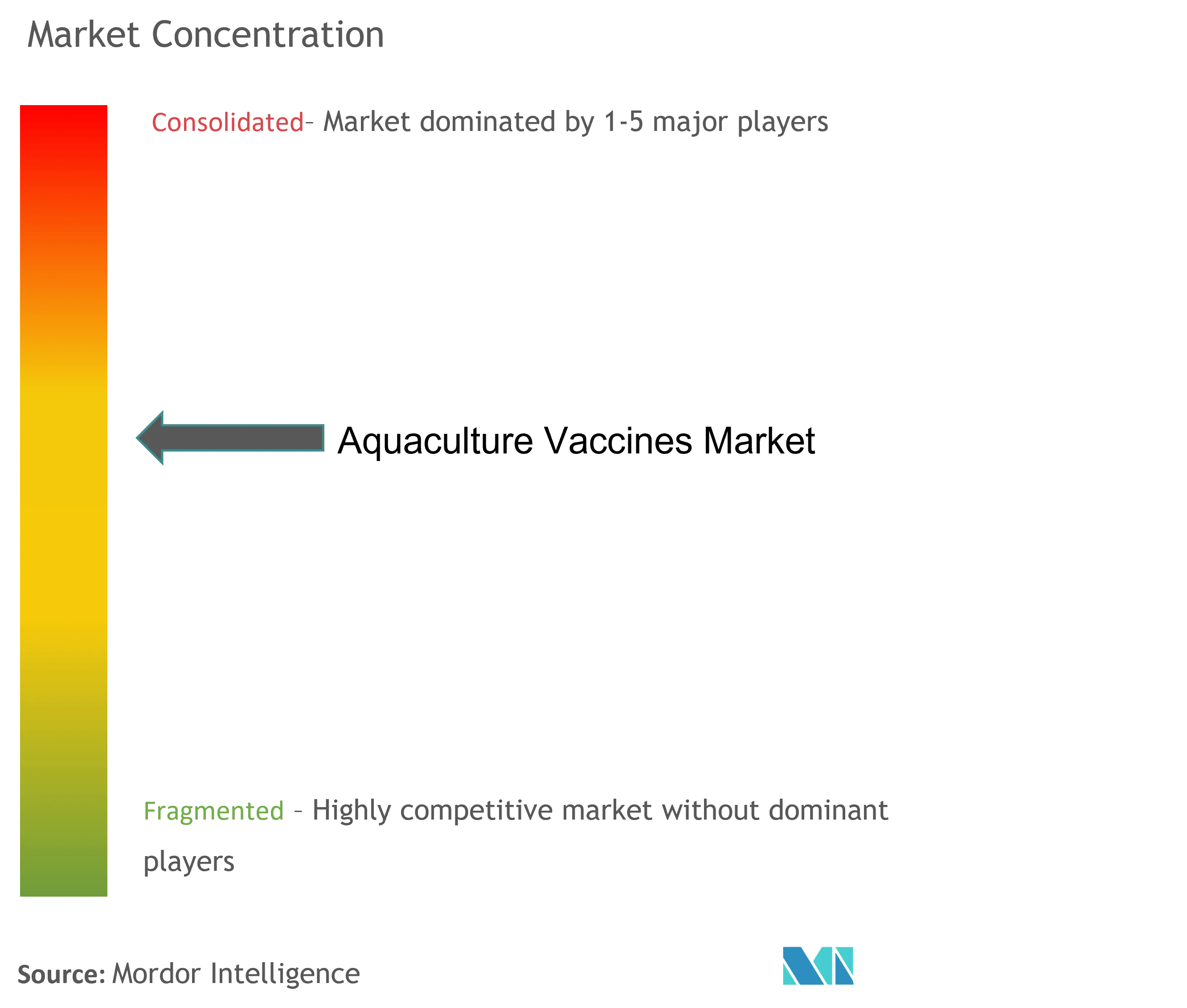Aquaculture Vaccines Market Analysis
The Global Aquaculture Vaccine Market is expected to register a CAGR of 6.2% during the forecast period.
Aquaculture Vaccines Market Trends
Live Vaccine Type Segment is Expected to Hold a Significant Share in the Aquaculture Vaccines Market Over the Forecast Period
Live vaccinations include living, attenuated microbes that can still reproduce in the host (vaccinee). The microbes are "weak," which means they retain some immunogenic qualities while having lost much of their ability to cause disease. Live vaccinations often exhibit substantially higher immunogenicity than inactivated vaccines because they more closely mimic natural infection by activating a variety of immunologic responses, and in most cases, just one vaccination is enough to produce long-lasting, and occasionally even lifetime, immunity. Thus, the live vaccine type is widely used in administering immunity, due to which the live vaccine segment is expected to hold a significant share of the studied market.
In addition to the traditional ways of making vaccines, key players are also using advanced technologies, such as molecular manipulation of pathogens, to make live vaccines. Positive results from research studies in this area are expected to help the segment grow. For example, a research study published by iScience in July 2021 showed that 100% of the gene-deleted live attenuated candidate vaccine (ORF022L)-infected fish survived the infectious spleen and kidney necrosis virus (ISKNV) challenge, and ORF022L caused an anti-ISKNV specific antibody response and upregulation of immune-related genes.
Because of all of these things, the live vaccine segment is expected to have a large share of the market over the next few years.
Asia-Pacific Region is Expected to Occupy a Significant Share in the Aquaculture Vaccines Market Over the Forecast Period
The Asia-Pacific region is expected to hold a significant share of the aquaculture vaccines market due to the presence of one of the region's largest aquaculture industries, with major aquaculture-producing countries such as India and China.According to the 2022 report of the Food and Agriculture Organization (FAO) of the United Nations, Asian countries were the main producers, accounting for 70% of the total fisheries and aquaculture production of aquatic animals, and in the last 20 years, aquaculture production has doubled in Asia and Africa. Hence, due to being the largest aquaculture production region, the demand for aquaculture vaccines is expected to be high in the region, which is expected to boost growth in the studied market.
In the Asia-Pacific region, China is expected to be a major market owing to its highest share in the global aquaculture production market with about 35% of the global fisheries and aquaculture production, as per the 2022 report of the FAO of the United Nations. Furthermore, the aquaculture industry in China is expanding, which is expected to drive growth in the aquaculture vaccine market in the country. For instance, in May 2022, China launched one of the world's largest floating fish farms that can produce 3,700 tons of fish every year, called Guoxin 1, which is 250 meters (820 feet) long and 45 meters wide with a displacement of 130,000 tons and contains 15 huge tanks for production.
Therefore, due to the above-mentioned factors, the demand for aquaculture vaccines is expected to be high in the Asia-Pacific region due to the highest share in global fisheries and aquaculture production, and hence, the region is expected to hold a significant share in the aquaculture vaccines market over the forecast period.
Aquaculture Vaccines Industry Overview
The aquaculture vaccines market is consolidated, and a few of the major players are currently dominating the market due to their immense involvement in the aquaculture vaccines industry. Some of the key companies in the aquaculture vaccines market are Merck & Co., Inc., Zoetis (PharmaQ), Hipra, Technovax, and Elanco, among others.
Aquaculture Vaccines Market Leaders
-
Merck & Co. Inc.
-
Hipra
-
Elanco
-
KBNP
-
Nisseiken Co., Ltd.
- *Disclaimer: Major Players sorted in no particular order
Aquaculture Vaccines Market News
- November 2022: Hyderabad-based Indian Immunologicals Ltd. (IIL) partnered with the Central Institute of Fisheries Education (CIFE) for the commercial development of India's first fish vaccine.
- January 2022: Benchmark Animal Health and Cermaq Group AS received funding of NOK 4.2 million from the Research Council of Norway to support a collaborative research project to develop a vaccine against salmon diseases caused by Tenacibaculum bacteria.
Aquaculture Vaccines Industry Segmentation
As per the scope of the report, vaccination is a simple, reliable, and preventative technique of disease prevention for fish. Antigens from pathogenic organisms that have been turned non-pathogenic through various processes are used in vaccines to stimulate the immune system of the animal and raise its resistance to disease when pathogens are encountered naturally. The aquaculture vaccines market is segmented by vaccine type (live, inactivated, and others), route of administration (oral, immersion, and injection), and geography (North America, Europe, Asia-Pacific, and the Rest of the World). The report offers the value (in USD million) for the above segments.
| By Vaccine Type | Live | ||
| Inactivated | |||
| Other Vaccine Types | |||
| By Type of Administration | Oral | ||
| Immersion | |||
| Injected | |||
| Geography | North America | United States | |
| Canada | |||
| Mexico | |||
| Europe | Germany | ||
| United Kingdom | |||
| France | |||
| Italy | |||
| Spain | |||
| Rest of Europe | |||
| Asia-Pacific | China | ||
| Japan | |||
| India | |||
| Australia | |||
| South Korea | |||
| Rest of Asia-Pacific | |||
| Rest of the World | |||
Aquaculture Vaccines Market Research FAQs
What is the current Global Aquaculture Vaccine Market size?
The Global Aquaculture Vaccine Market is projected to register a CAGR of 6.2% during the forecast period (2025-2030)
Who are the key players in Global Aquaculture Vaccine Market?
Merck & Co. Inc., Hipra, Elanco, KBNP and Nisseiken Co., Ltd. are the major companies operating in the Global Aquaculture Vaccine Market.
Which is the fastest growing region in Global Aquaculture Vaccine Market?
North America is estimated to grow at the highest CAGR over the forecast period (2025-2030).
Which region has the biggest share in Global Aquaculture Vaccine Market?
In 2025, the Asia-Pacific accounts for the largest market share in Global Aquaculture Vaccine Market.
What years does this Global Aquaculture Vaccine Market cover?
The report covers the Global Aquaculture Vaccine Market historical market size for years: 2019, 2020, 2021, 2022, 2023 and 2024. The report also forecasts the Global Aquaculture Vaccine Market size for years: 2025, 2026, 2027, 2028, 2029 and 2030.
Our Best Selling Reports
Aquaculture Vaccines Industry Report
Statistics for the 2025 Global Aquaculture Vaccine market share, size and revenue growth rate, created by Mordor Intelligence™ Industry Reports. Global Aquaculture Vaccine analysis includes a market forecast outlook for 2025 to 2030 and historical overview. Get a sample of this industry analysis as a free report PDF download.







